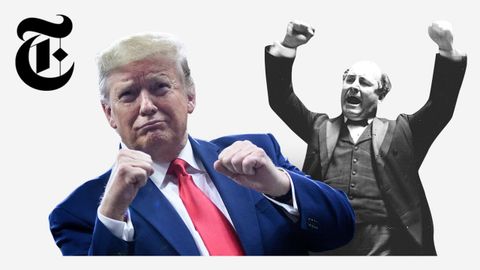
Subtitles & vocabulary
Presidential Candidates Crave the Spotlight. 200 Years Ago That Was Taboo. Here’s Why. | NYT News
00
林宜悉 posted on 2020/04/07Save
Video vocabulary
term
US /tɚm/
・
UK /tɜ:m/
- Noun (Countable/Uncountable)
- Conditions applying to an agreement, contract
- Length of time something is expected to happen
- Transitive Verb
- To call; give a name to
A1TOEIC
More campaign
US /kæmˈpen/
・
UK /kæm'peɪn/
- Intransitive Verb
- To work in an organized, active way towards a goal
- Noun (Countable/Uncountable)
- Series of actions meant to achieve a goal
- A planned set of military activities intended to achieve a particular objective.
A2TOEIC
More expect
US /ɪkˈspɛkt/
・
UK /ɪk'spekt/
- Verb (Transitive/Intransitive)
- To believe something is probably going to happen
- To anticipate or believe that something will happen or someone will arrive.
A1TOEIC
More demand
US /dɪˈmænd/
・
UK /dɪ'mɑ:nd/
- Noun (Countable/Uncountable)
- Desire customers have to buy product, service
- A strong request for someone to do something
- Transitive Verb
- To strongly request someone to do something
- To need something.
A2TOEIC
More Use Energy
Unlock All Vocabulary
Unlock pronunciation, explanations, and filters
